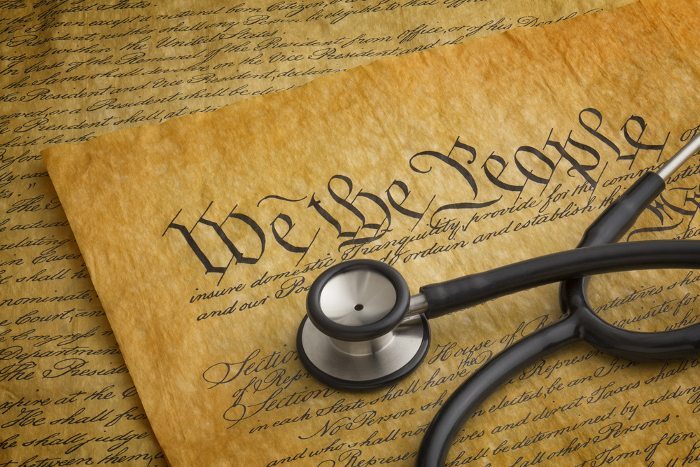Study: Medicaid Benefits Don’t Guarantee Health-Care Access
Having health insurance is not enough to ensure reliable access to care, despite the flood of new Medicaid enrollees under the Affordable Care Act.

Having health insurance is not enough to ensure reliable access to care, despite the flood of new Medicaid enrollees under the Affordable Care Act, according to a report released Tuesday by the Department of Health and Human Services.
The report found not only that rules on health-care access vary drastically from state to state—and continue to leave many patients out of care’s reach—but that violations of these rules go largely undetected, unfixed, and unpunished.
Federal regulators charged with overseeing state Medicaid programs don’t assess whether or not state standards ensure adequate access to care, calling into question whether these standards are effective.
Medicaid, the federal and state jointly-run health-care program, is the source of health insurance and coverage for almost 70 million low-income people in the United States.
And following the expansion of Medicaid under the ACA, the number of people turning to public insurance has swelled: the Congressional Budget Office has estimated that by 2018, an additional 18 million people will get insurance through Medicaid, and a total of one in four Americans will receive the government benefit by 2016.
Though some broad Medicaid rules are determined by the federal government, including rules related to standards of access to providers, most of the specifics are left for states to decide.
The most common state standards set limits on distance, wait time, and the number of providers, but the specific standards vary between states. Thirty two states, for example, establish limitations on the maximum distance or time Medicaid enrollees have to travel for an appointment.
In Arizona, standards require a primary care provider within five miles of patients. In Utah, that distance is 45 miles. Many states also set limits on the amount of time a patient must wait for an appointment, ranging from ten days in California to 45 days in Minnesota.
The third most common standard is on the ratio of providers to Medicaid beneficiaries, and that ranges from one provider for every 100 enrollees in Wisconsin, to one for every 2,000 in California.
Though it may seem obvious that states with shorter wait time requirements have better access to care, it’s unclear whether, for example, California’s one to 2,000 provider-to-patient ratio constitutes adequate access at all, according to the report. That’s because the Centers for Medicare and Medicaid Services, a federal agency charged with reviewing state access standards, does not look at whether the standards are “adequate to ensure access to care” in their reviews, according to the Department of Health and Human Services’ report.
The report found that states aren’t doing a good enough job of determining when violations of the standards have occurred. Of the 33 states examined by the report, only 11 found any violations in a four-year period, and only six states imposed sanctions in response to the violations.
The solution? Strengthen federal oversight of state standards and compliance measures, says the report.
Marilyn Tavenner, an administrator for CMS, has responded to the report, saying she generally agrees with the report’s findings.
“We are considering options to set forth CMS’ expectations for network access standards and expect to address this issue through the development of additional guidance to states,” Tavenner said.
State access standards are not the only obstacles facing low-income Americans seeking health insurance. As Rewire reported, backlogs in the processing of Medicaid applications have left eligible people in limbo and confused about their status.
